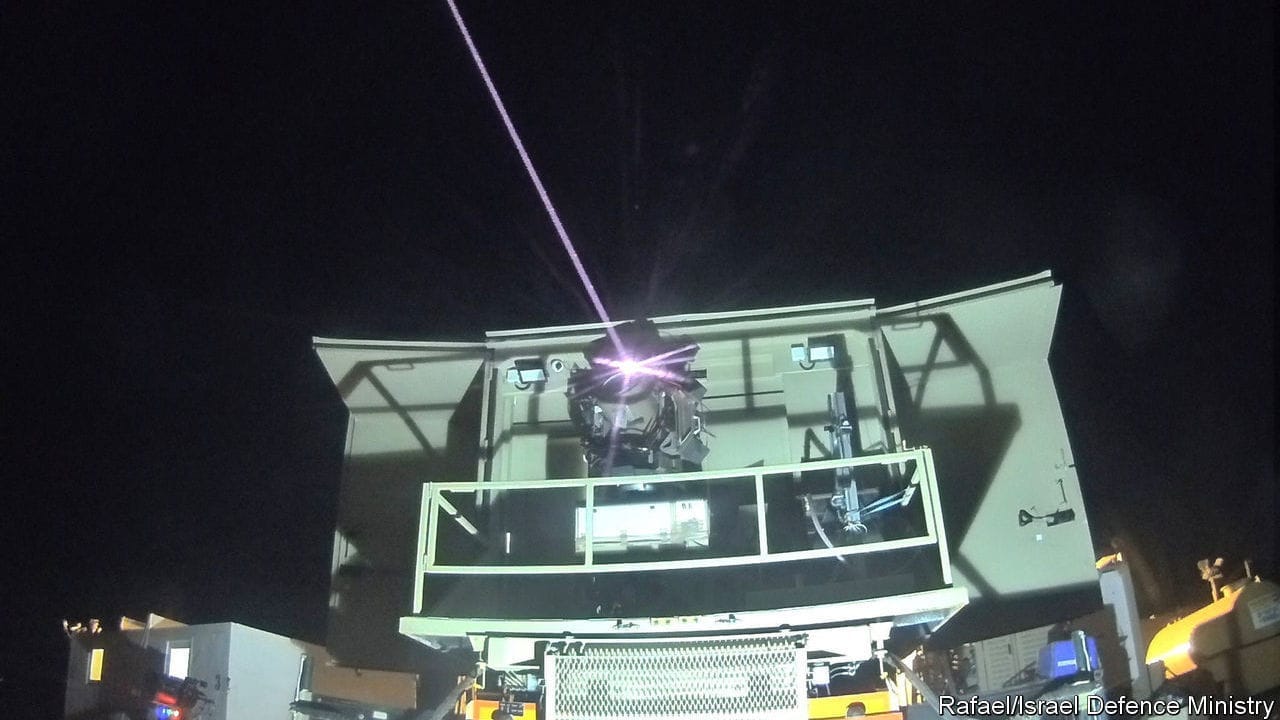The Iron Beam's Laser Precision Set to Transform Modern Military Technology
Your Weekly Shortcut to Deeptech Investing—Exclusive Trends & Startup Reports for VCs & Angels in Just 5 Minutes
By Gael Amouyal, Deeptech Expert
📢EXCITING NEWS!
In response to member requests, we've launched the Deeptech Community Podcast. Stay updated with the latest investment insights, empowering retail investors to make informed decisions in the ever-evolving realm of emerging technologies.
Podcast #1
What is going on?
At the forefront of cutting-edge missile defense, the Iron Beam stands as a revolutionary laser weapon, poised to reshape the landscape of modern military technology. Developed as an integral component of Israel's defense strategy and used for the first time in the current war against the terrorist group Hamas, the Iron Beam represents a paradigm shift in antimissile capabilities. This sophisticated system utilizes directed energy to neutralize incoming threats, marking a departure from conventional interception methods. To appreciate the significance of the Iron Beam, one must first understand its role within the broader context of the Iron Dome—a stalwart guardian of the skies renowned for its ability to intercept and eliminate incoming projectiles. Together, these advancements epitomize the pinnacle of scientific innovation in the realm of missile defense.
What does it mean?
At its core, this advanced system utilizes directed energy, specifically laser beams, to intercept and destroy incoming projectiles. Unlike traditional missile defense systems that rely on interceptors or projectiles, the Iron Beam's approach is akin to science fiction, reminiscent of the futuristic weaponry seen in Star Wars.
The process begins with the detection of an incoming threat, typically a rocket or a missile. Once identified, the Iron Beam locks onto the target using its advanced tracking system. The system then focuses a high-energy laser beam precisely on the incoming projectile. This laser beam is essentially a concentrated form of light energy, and its intensity is calibrated to generate sufficient heat upon contact.
As the laser beam makes contact with the target, it rapidly heats the surface of the incoming projectile. The intense heat causes structural damage, compromising the integrity of the threat. In some cases, the heat is adequate to ignite the missile's fuel or explosives, leading to its destruction mid-air. The entire process happens in a matter of seconds, showcasing the speed and precision of the Iron Beam.
One of the key advantages of this laser-based approach is its ability to engage multiple targets in rapid succession. Traditional missile interceptors have limitations in terms of the number of threats they can engage simultaneously, but the speed of light allows the Iron Beam to swiftly transition between targets, providing a dynamic and efficient defense mechanism.
Why should I care?
In the recent conflict between Israel and the terrorist group Hamas, the Iron Beam technology emerged as a potential critical addition to the established Iron Dome missile defense system. Tested for the first time under the intense pressure of over 10,000 rockets launched by Hamas, the Iron Beam seamlessly complements the capabilities of the Iron Dome. Its advanced laser-based interception provides an additional layer of defense, showcasing its effectiveness in real-world scenarios.
The financial implications of the Iron Beam technology could be profound for Rafael Advanced Defense Systems, the Israeli company behind its development. With an influx of demand following its successful real-world testing during the recent conflict with Hamas, Rafael may anticipates a substantial boost in revenue after the system will be fully operational in 2025. The cost-effectiveness of the Iron Beam not only bolsters its market competitiveness but also positions Rafael for lucrative contracts. The financial success of the Iron Beam will solidifies Rafael's standing as a key player in the global defense market.
In essence, the Iron Beam represents a leap forward in missile defense technology, offering a futuristic solution that combines precision, speed, and cost-effectiveness. Its utilization of directed energy not only enhances the capability to counter evolving threats but also establishes a new benchmark in the field of antimissile systems.





